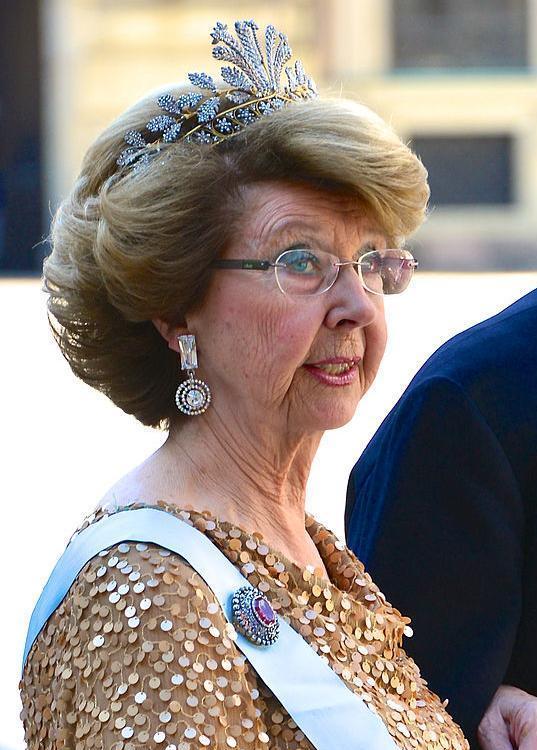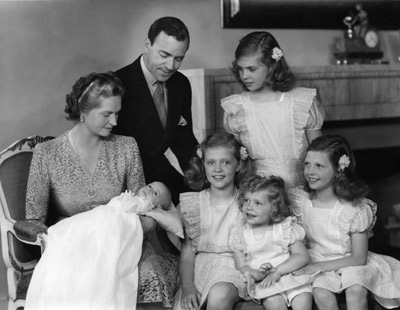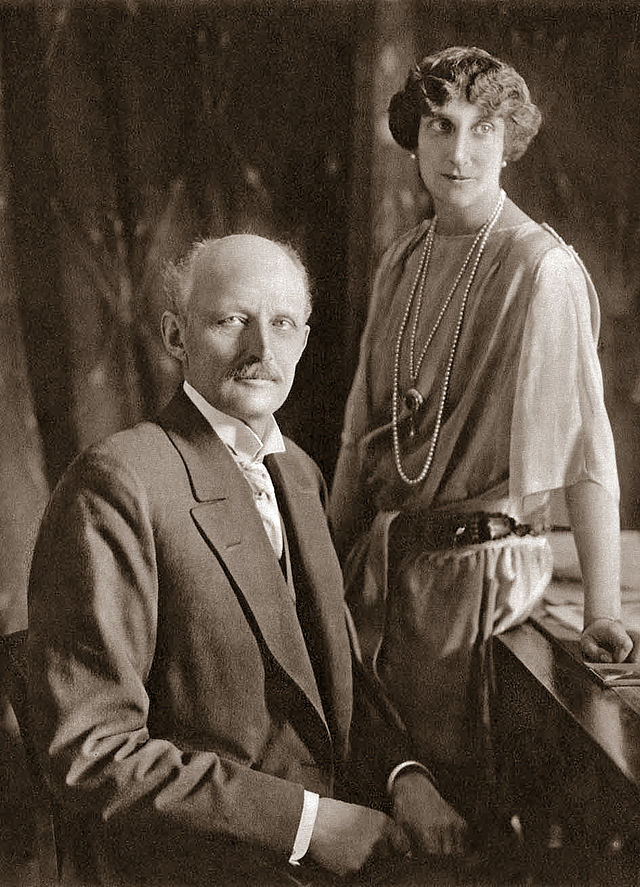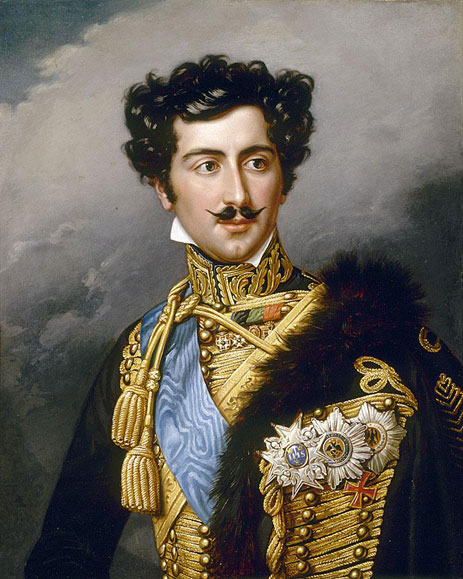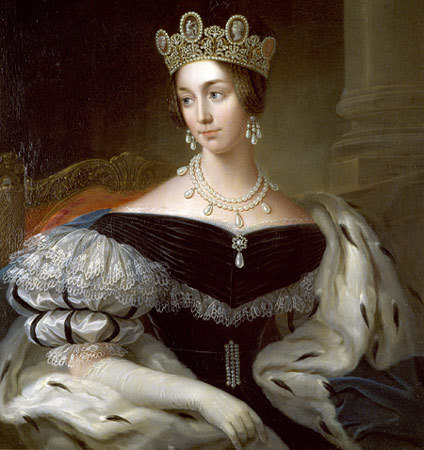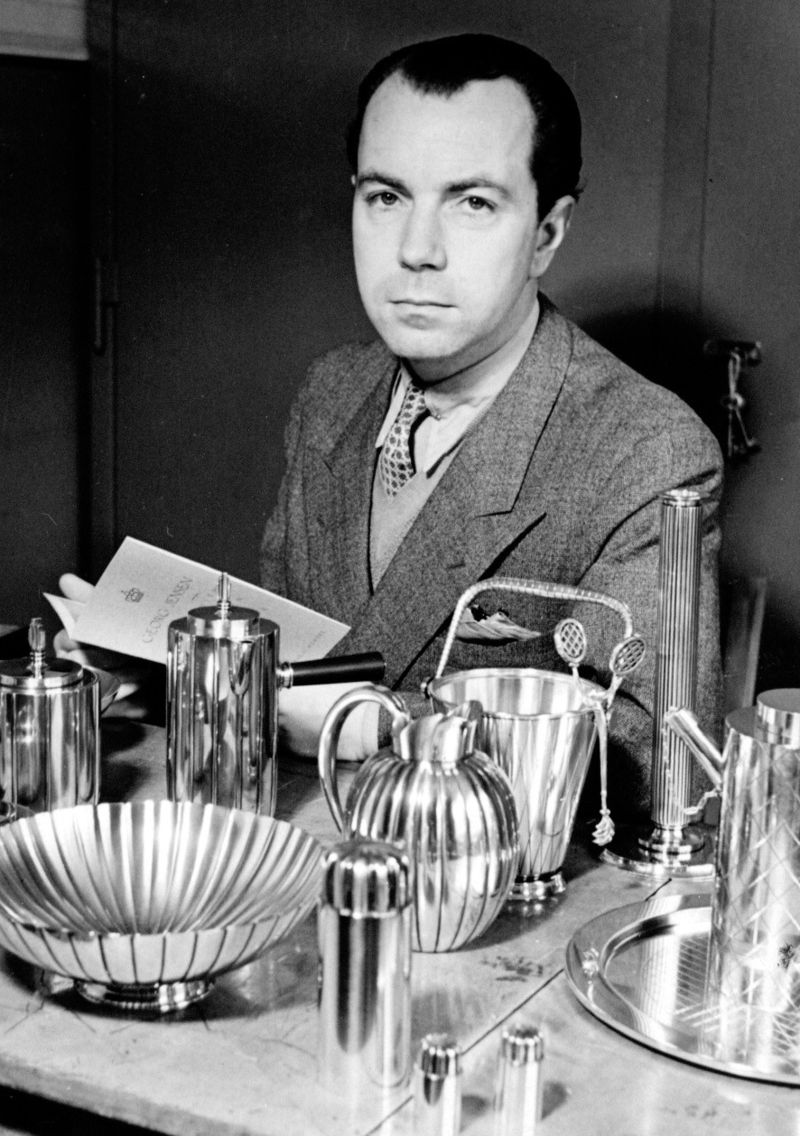by Scott Mehl © Unofficial Royalty 2014
Princess Lilian of Sweden, Duchess of Halland, began life as Lillian May Davies, born August 30, 1915, in Swansea, Wales. She was the daughter of William Davies and Gladys Curran. Her parents separated when she was young, and at the age of 16, Lilian (having dropped one of the Ls from her name) moved to London, England where she found work as a model and actress. In 1940, she married Scottish actor Ivan Craig. Soon after, he enlisted in the British Army and served overseas during the war. As a military wife, Lilian worked at a British factory making radio parts for the Royal Navy, and at a hospital for wounded veterans.

Lilian in the 1940s; photo source: The Mirror
It was in 1943 that she first met her Prince charming. Prince Bertil of Sweden, Duke of Halland, the third son of the future King Gustaf VI Adolf of Sweden and Princess Margaret of Connaught, a granddaughter of Queen Victoria, was serving as a naval attaché at the Swedish Embassy in London. They reportedly met at a cocktail party and quickly became involved. When her husband returned in 1945, having fallen in love with an Italian woman while serving overseas, the two agreed to a quick and very amicable divorce. Lilian and her ex-husband would remain close through the years, with Mr. Craig visiting Lilian and Bertil several times at their home on the French Riviera.
At the time, Bertil was third in line to the throne, behind his father and older brother Gustaf Adolf. His other two brothers, Sigvard and Carl Johan, had both lost their royal status upon marriage to commoners. By the time his father came to the throne in 1950, Bertil was now second in the line of succession. His elder brother Gustaf Adolf had been killed in a plane crash in 1947, leaving an infant son, Carl Gustaf, the future King Carl XVI Gustaf of Sweden, the heir to the throne. With the likelihood of Bertil being called to serve as Regent for his young nephew, he and Lilian chose not to marry so that he could retain his position in the Royal Family.
The couple lived together privately, primarily at Villa Mirage, their home in Sainte-Maxime, France, purchased by Prince Bertil in 1946. In 1949, he purchased Villa Solbaken in Djurgården, Stockholm, Sweden. Prince Bertil continued his role within the royal family, supported by Lilian, a much-loved member of the family (although not in the public eye), despite the lack of a marriage. As Lilian stated in her memoirs, she was never invited to any official functions, instead, sitting home and watching her Prince on television. She finally received an invitation to the private celebrations for King Gustav V Adolf’s 80th birthday celebration in 1962. However, her first public appearance with the Swedish Royal Court was not until his 90th birthday celebrations in 1972.

Bertil and Lilian on the day of their wedding with King Carl XVI Gustaf of Sweden on the left and his wife Queen Silvia on the right; photo: Corbis
Bertil’s father died in 1973, and Bertil’s nephew became King Carl XVI Gustaf. The rules, as well as the times, were beginning to change. The King married in June 1976 to a commoner, Sylvia Sommerlath, and soon after, he granted his formal permission for Bertil and Lilian to marry. The couple married in the Royal Chapel at Drottningholm Palace in Drottningholm, Sweden, on December 7, 1976. At the time, Bertil was heir-presumptive to the throne and would remain so until the birth of Prince Carl Philip in 1979.
During these years, Princess Lilian formed a very close bond with the new Queen Silvia and became a surrogate grandmother to the young Victoria, Carl Philip, and Madeleine, the three children of King Carl Gustaf and Queen Silvia. All three are reported to have had a very close relationship with both Lilian and Bertil. Lilian took part in many official functions and is best remembered for her appearances at the Nobel Prize ceremonies.

Bertil and Lilian – photo: Corbis
Lilian’s beloved Prince Bertil died in 1997 at Villa Solbacken. His large estate was left primarily to Lilian, with the exception of Villa Solbacken which was left to his godson, Prince Carl Philip, with the condition that Lilian would retain use of the home for the remainder of her life. Their French retreat, Villa Mirage, held too many memories for the Princess, and she passed ownership on to King Carl Gustaf. A summer residence was later sold, and she retained an apartment in London. She also refused a specific bequest of 15 million SEK, instead insisting that it be divided between Victoria, Carl Philip, and Madeleine.
In 2000, Lilian wrote a memoir – Mitt liv med prins Bertil (My life with Prince Bertil). She continued to be an active member of the royal family, participating in official events and continuing her patronage of many organizations until 2010. At that point, it was announced that Princess Lilian was suffering from Alzheimer’s Disease and would no longer be appearing in public. She was unable to attend the marriage of Crown Princess Victoria a few weeks later.
On the afternoon of March 10, 2013, Princess Lilian of Sweden, Duchess of Halland, passed away at Villa Solbacken. Her funeral was held six days later in the Royal Chapel at the Royal Palace in Stockholm. In attendance were King Carl Gustaf, Queen Silvia, Crown Princess Victoria, Prince Daniel, Prince Carl Philip, Princess Madeleine, and Mr. Christopher O’Neill. Also attending were Queen Margrethe II of Denmark (Princess Lilian’s niece by marriage), and Princess Astrid of Norway, and other family, friends, and representatives from the Swedish government. Following the funeral service, Princess Lilian was interred beside her husband Prince Bertil at the Royal Burial Ground in Haga Park in Solna, Stockholm, Sweden. In 2014, Princess Madeleine named her first child Leonore Lilian Maria, with Lilian in honor of Princess Lilian.
This article is the intellectual property of Unofficial Royalty and is NOT TO BE COPIED, EDITED, OR POSTED IN ANY FORM ON ANOTHER WEBSITE under any circumstances. It is permissible to use a link that directs to Unofficial Royalty.
